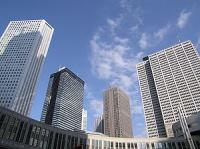|
|
|
For three decades from 1960, Japan experienced rapid economic growth, which was referred to as the Japanese post-war economic miracle. With average growth rates of 10% in the 1960s, 5% in the 1970s, and 4% in the 1980s, Japan was able to establish and maintain itself as the world's second largest economy from 1968 until 2010, when it was supplanted by the People's Republic of China. However, in the second half of the 1980s, rising stock and real estate prices caused the Japanese economy to overheat in what was later to be known as the Japanese asset price bubble. The economic bubble came to an abrupt end as the Tokyo Stock Exchange crashed in 1990 � 92 and real estate prices peaked in 1991. Growth in Japan throughout the 1990s at 1.5% was slower than growth in other major developed economies, giving rise to the term Lost Decade. The problems of the 1990s may have been exacerbated by domestic policies intended to wring speculative excesses from the stock and real estate markets. With government efforts to revive economic growth throughout the 1990s unsuccessful, Junichiro Koizumi adopted policies to promote exports, effectively raising GDP on an average of 2.1% annually from 2003 to 2007. Subsequently, the global financial crisis and a collapse in domestic demand saw the economy shrink 1.2% in 2008 and 5.0% in 2009. Japan has the world's highest gross sovereign debt amounting at 225% of GDP or US$10.55 trillion. A mountainous, volcanic island country, Japan has inadequate natural resources to support its growing economy and large population. Although many kinds of minerals were extracted throughout the country, most mineral resources had to be imported in the postwar era. Local deposits of metal-bearing ores were difficult to process because they were low grade. The nation's large and varied forest resources, which covered 70 percent of the country in the late 1980s, were not utilized extensively. Because of political decisions on local, prefectural, and nation levels, Japan decided not to exploit its forest resources for economic gain. Domestic sources only supplied between 25 and 30 percent of the nation's timber needs. Agriculture and fishing were the best developed resources, but only through years of painstaking investment and toil. The nation therefore built up the manufacturing and processing industries to convert raw materials imported from abroad. This strategy of economic development necessitated the establishment of a strong economic infrastructure to provide the needed energy, transportation, communications, and technological know-how. Deposits of gold, magnesium, and silver meet current industrial demands, but Japan is dependent on foreign sources for many of the minerals essential to modern industry. Iron ore, copper, bauxite, and alumina must be imported, as well as many forest products. In 2010 GDP Growth in the final three months was -2.9% but total GDP Growth for 2010 was 4.0%, one of the highest growth rates for about 20 years. But Japan's economy was disrupted in March 2011 due to the earthquake and the effect of the tsunami. GDP contracted by 3.5% in Q1 of 2011. As Japan's economy has suffered two quarterly contractions in a row, Japan reentered recession. In 2008-09 the economy had contracted 6.4%. However, output is expected to bounce back in the second half of 2011, as supply constraints ease and reconstruction accelerates. From 1992 up until now Japan has had economic problems with an average GDP growth of 1%-2% growth. 2011 GDP is expected to Contract 0.7%, 2012 GDP Growth is expected to be at 2.9%, according to the OECD. |




 RSS
RSS